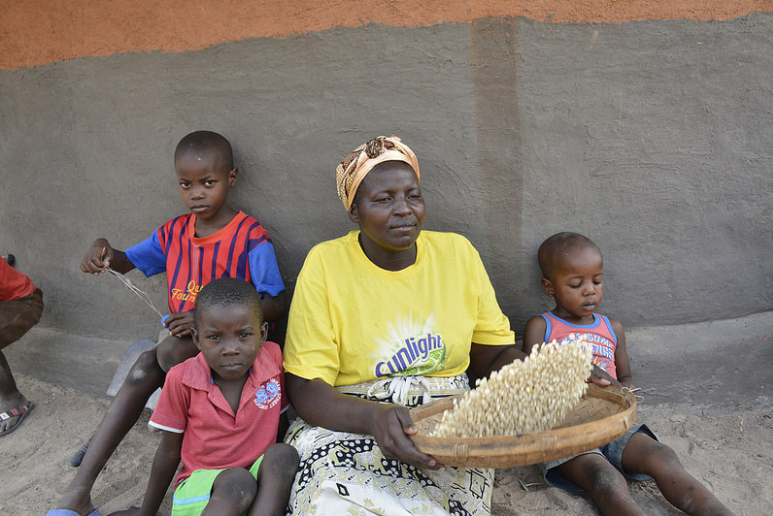
EL BATAN, Mexico (CIMMYT) — Cereal yields in sub-Saharan Africa must increase to 80 percent of their potential by 2050 to meet the enormous increase in demand for food, according to a new report.
Currently, sub-Saharan Africa is among the regions with the largest gap between cereal consumption and production, with demand projected to triple between 2010 and 2050. The study “Can Sub-Saharan Africa Feed Itself?” shows that nearly complete closure of the gap between current farm yields and yield potential is needed to maintain the current level of cereal self-sufficiency by 2050. For all countries, such yield gap closure requires a large, abrupt acceleration in rate of yield increase. If this acceleration is not achieved, massive cropland expansion with attendant biodiversity loss and greenhouse gas emissions or vast import dependency are to be expected.
Learn more about how Africa can meet future food demand in the feature “Can sub-Saharan Africa meet its future cereal food requirement?” and check out other new publications from CIMMYT scientists below.
- Genomic regions associated with root traits under drought stress in tropical maize (Zea mays L.). 2016. Zaidi, P.H.; Seetharam, K.; Krishna, G.; Krishnamurthy, S.L.; Gajanan Saykhedkar; Babu, R.; Zerka, M.; Vinayan, M.T.; Vivek, B. Plos one, 11(10): e0164340.
- Can sub-Saharan Africa feed itself? 2016. Ittersum, M.K. van; Bussel, L.G.J. van; Wolf, J.; Grassini, P.; Wart, J. van; Guilpart, N.; Claessens, L.; De Groote, H.; Wiebe, K.; Mason-D’Croz, D.; Haishun Yang; Boogaard, H.; Oort, P.J.A. van; Van Loon, M.P.; Saito, K.; Adimo, O.; Adjei-Nsiah, S.; Agali, A.; Bala, A.; Chikowo, R.; Kaizzi, K.; Kouressy, M.; Makoi, J.H.; Ouattara, K.; Kindie Tesfaye Fantaye; Cassman, K.G. Proceedings of the National Academy of Sciences of the United States of America PNAS, 113 (52): 14964-14969.
- QTL mapping for grain zinc and iron concentrations and zinc efficiency in a tetraploid and hexaploid wheat mapping populations. 2016. Velu, G.; Yusuf Tutus; Gomez-Becerra, H.F.; Yuanfeng Hao; Demir, L.; Kara, R.; Crespo-Herrera, L.A.; Orhan, S.; Yazici, A.; Singh, R.P.; Cakmak, I. Plant and Soil, online first.
- Control of Helminthosporium leaf blight of spring wheat using seed treatments and single foliar spray in Indo-Gangetic Plains of Nepal. 2016. Sharma-Poudyal, D.; Sharma, R.C.; Duveiller, E. Crop Protection, 88: 161-166.
- Breeding value of primary synthetic wheat genotypes for grain yield. 2016. Jafarzadeh, J.; Bonnett, D.G.; Jannink, J.L.; Akdemir, D.; Dreisigacker, S.; Sorrells, M.E. Plos one, 11 (9): e0162860.
 Climate adaptation and mitigation
Climate adaptation and mitigation 
